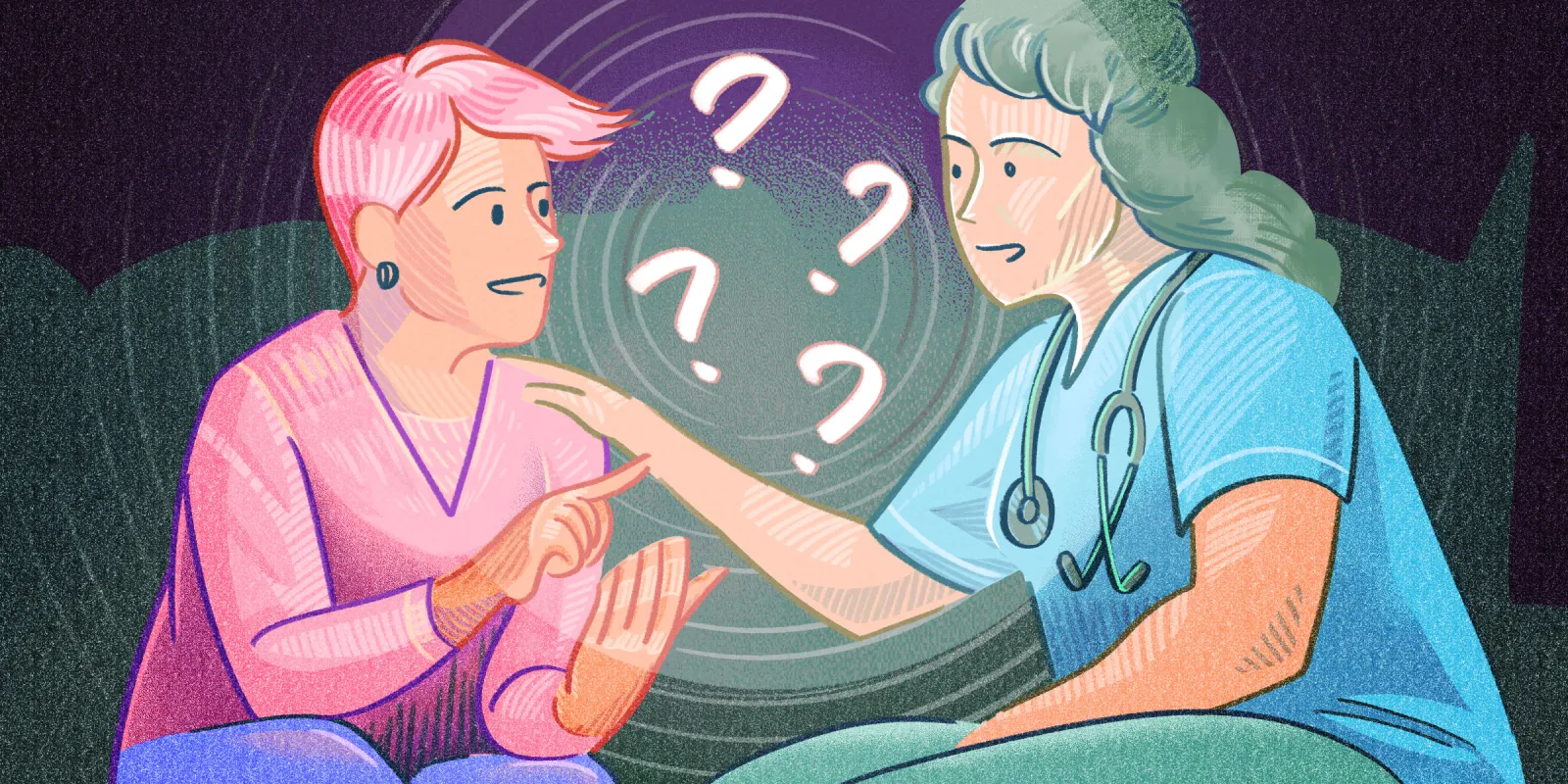Medicine is unique among the sciences for our communication. As medical scientists we’re tasked on a daily basis of communicating internally with our peers and also externally to the lay public. There are some physicists who have made it their job to communicate complex cosmology to the people, but for the most part, physicists talk about physics to physicists, and chemists talk about chemistry with chemists. Doctors talk about medicine to other doctors, but also to physicists, chemists, mothers, bank tellers, and everyone else in society. We have to communicate with specificity to our colleagues and in general with everyone. It’s a delicate balance and we often fail to communicate our true intentions and understanding.
Though it’s not for lack of trying and training. In medical school we’re taught how to explain a diagnosis, how to walk a colleague through a case, and how to present on rounds. The problem is that this communication happens in a medical frame of reference. People can generally agree on what happened in medicine. I have chest pain. I broke my arm. I have a tick stuck on my leg. The why and how in medicine is harder to parse and harder to explain.
Consider blood pressure. What is it? Why is it important? Why should it be 120/80? What does 120/80 mean? The answers to these questions depend on who’s reading them. Even between physicians these answers can change. Blood pressure means one thing to a primary care doctor, and quite another to an ER doctor. But what does blood pressure mean to a patient? What if they’re a plumber? What if they’re an artist? What concept do they have about how the body works? What’s going on inside of them when they feel something? Or don’t? Medicine is unique in terms of this dichotomy between expert and novice, because everyone is an expert on their own qualitative experience.
Consider a mailbox. Imagine that you had no previous connection to the mail, or any cultural context about mail delivery. Would you be able to understand that this thing on a pole is where you get bills? Is that a door that opens? What is this red flag thing? The information that you need to work a mailbox and the thousands of other objects you interact with on a daily basis is not written down anywhere.
The modern design guru Don Norman calls this experience “mental models,” and in his book “The Design of Everyday Things,” they function as the framework for how we interact with objects in the world. You can’t understand a mailbox, or a doorknob, or a blood pressure cuff without cultural context and without a mental framework for interacting with the object. There’s not a manual for these items. You know how and why to use them because it’s part of the unwritten framework of the world.
It’s here that we find the intersection of objects and communication. The difficulty doesn’t arise because patients are stupid, or lack knowledge. They lack a mental framework that allows for the synthesis of new information into the preexisting idea about how the body works. If your only understanding of “pressure,” comes from pipes in your basement that burst, you probably assume that blood pressure works the same way, and that if it goes up too high, you’ll pop!
This issue with mental models affects all of us, and I was held back in understanding crucial aspects of medicine by my own conceptual frameworks early in my career. As an embarrassing example, I remember a time when my entire concept of abdominal pain was revealed to be contingent on a false model of how the bladder worked.
Bladders aren’t rigid spheres, half filled with air as pictured in Netter’s gross anatomy, and yet this is how I understood them to work for far too long. Arteries aren’t like pipes in a basement. The arteries that carry blood pressure are muscular organs, more akin to your heart than a basement pipe. It would be a wonderful thing for doctors if we could only rupture aneurysms or burst arteries at extremely high blood pressures, but unfortunately that can happen at any pressure and is generally caused by vessel weakness, and not an acute rise in blood pressure. Unless you do a bunch of cocaine, which can really cause problems.
Imagine trying to express all of that, and convey decades of medical knowledge and experience, to someone without the mental model of what “high blood pressure” means. As doctors, we try to do this every day, but fail precisely because we don’t consider a patient’s underlying mental model of what blood pressure, or thousands of other diagnoses, mean to them. Communication is only effective when language is shared, and language is more than words. Context matters, and the underlying mental framework for something is how you process new information related to that framework. We’re taught to adapt our words from colleague to patient, avoiding “jargon,” and “medical terms,” but this isn’t enough. We have to realize that nothing is truly understood without a mental model for how it should be understood. Changing the words is insufficient. We have to take the patient’s internal framework into account as well.
One of the true joys of EM is that I can keep that patient in that room (or hallway) for as long as I need them to stay there. In an office practice, you need to clear the room in 10 minutes for the next group of three siblings with a cold. You might not have the time to assess what your patient knows about why they’re taking their medication, and only have time to default to, “We’re adjusting your medicine because your blood pressure is too high.” In the ED, we have whatever time we need, so understanding the patient’s understanding is simply more possible.
It is important to remember that communication is a means to an end. Understanding is not a static goal, but rather a constantly evolving process. Our world is made up of things we understand now, with our current framework of how things “work.” When that framework changes, our understanding of the world changes as well. Medicine is a system of knowledge, but also an experience of living inside a body. The interpretation of symptoms and feelings that happen inside you is different from those that happen inside me because we have different concepts and ideas about what could be causing those symptoms and feelings. We should remember that how we understand and use our own mailboxes might be different from how our neighbors understand theirs.
What mental model were you surprised about recently? Share in the comments.
Dr. Ryan Richman is an emergency medicine doc in upstate NY. Father of three, married to a pediatrician, and holder of several patents, he's an amateur baker and semi-professional Star Trek scholar. Also, anything with Matt Berry. If people still tweet (or X-plain?) he's @RWHRichman. Dr. Richman is a 2023–2024 Doximity Op-Med Fellow.
Illustration by April Brust







